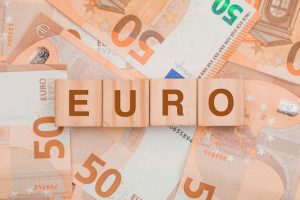DOLLAR SET FOR WEEKLY RISE, CYBER OUTAGE UNSETTLES INVESTORS
The dollar climbed in trading on Friday and was poised to snap a two-week streak of declines as a worldwide cyber outage that affected banks, airlines and broadcasters unnerved investors, although volatility in the currency markets remained in check. A software update by global cybersecurity firm CrowdStrike crippled industries from travel to finance before services started coming back online after hours of disruption, highlighting the risks of a global shift towards digital, interconnected technologies. The dollar index was on track for its second straight daily advance, putting the greenback on pace for its first weekly gain in three, bouncing back on recent U.S. economic data and concerns about the technology outage. “It’s perhaps a result of the selling pressure earlier in the week, and at the tail end of last week, seeming rather over-done, particularly when one considers that U.S. economic growth remains firm, and that while the Fed are set to cut in September, easing will still be relatively synchronized across G10 central banks,” said Michael Brown, market analyst at Pepperstone in London. “Of course, the earlier tech issues may have sparked a bit of a flight to safety too, causing some knee-jerk dollar buying earlier in the day, with that strength then continuing into the afternoon session.”
EURO FALLS AFTER ECB HOLDS RATES, DOLLAR CLIMBS AFTER DATA
The euro fell on Thursday after the European Central Bank kept rates steady, as was widely expected, while the dollar index climbed after stronger-than-expected data on the U.S. labor market and manufacturing.The ECB gave no insight into its next move, arguing that domestic price pressures remain high and inflation will be above its target well into next year, leaving the market to decipher comments from President Christine Lagarde for clues on the central bank’s next move.”Compared to the Fed, the ECB may have been the first to cut, but they won’t be the fastest. When the ECB cut last it was a cautious cut, now every meeting is going to be a live meeting where the data will dictate every move,” said Brian Jacobsen, chief economist at Annex Wealth Management in Menomonee Falls, Wisconsin. “When the Fed cuts, it will be a confident cut where even a month or two of bad data won’t take them off their cutting path. It’s annoying that the Fed is waiting so long to cut, but ultimately it will make for a clearer path.”The euro was down 0.37% at $1.0897, a day after hitting a four-month high of $1.0947. It was poised for its biggest daily percentage drop in a month. On the U.S. front, weekly initial jobless claims jumped by 20,000 to 243,000, above the 230,000 estimate of economists polled by Reuters, although it is not considered to be a notable shift in the labor market due to seasonal factors.

STERLING NEEDS MORE THAN HIGHER UK RATES TO STAY IN THE FAST LANE
The pound hit its highest in a year on Wednesday, driven by investors who are scrambling for juicier returns as global interest rates start to fall, but strategists say it will take more than higher rates for sterling to retain that sparkle. Data on Wednesday showed UK inflation is proving more stubborn than many expected, prompting traders to axe their bets on an August rate cut and sending the pound above $1.30 for the first time since last July. Unlike the euro and even the dollar, the pound has not been shaken by domestic politics, but rather has got a boost from a new government that many hope will be able to draw a line under years of unpredictable policies and volatile UK markets. Growth in Britain has also started to improve. On Tuesday, the International Monetary Fund raised its estimate of UK economic growth to 0.7% this year, from 0.5% in its last set of global forecasts in April. But at the heart of this latest leg higher in the pound is the belief that British interest rates will take longer to decline than those elsewhere. Many big central banks have started cutting rates. The Bank of England and the U.S. Federal Reserve are among the last dominoes standing, although the most recent signals from the latter are that September is crystallising as the starting point for U.S. rates to fall. “It really depends on what you think is driving the pound — is it BoE rate cut expectations being pushed back or Fed rate cut expectations being pushed forward?” Geoff Yu, senior macro strategist at BNY Mellon, said. “The fact that cable is above $1.30 and sterling has risen against the euro suggests there has been a re-pricing.”
CANADIAN DOLLAR WEAKENS AS US TECH STOCKS SLIDE
The Canadian dollar edged lower against its U.S. counterpart on Wednesday as risk appetite faded and after Canadian inflation data the previous day raised prospects of the Bank of Canada cutting interest rates further next week. The loonie CAD= was trading 0.1% lower at 1.3690 to the U.S. dollar, or 73.05 U.S. cents, after trading in a range of 1.3657 to 1.3701. “CAD is weaker on some equity weakness and lingering concerns about a rate cut next week after yesterday’s CPI data,” said Erik Bregar, director, FX & precious metals risk management at Silver Gold Bull. Some major U.S. stock indexes, including the Nasdaq, tumbled as the prospect of tighter China-focused U.S. trade curbs weighed on megacap chip and tech stocks. Canada is a major producer of commodities so the currency tends to be sensitive to shifts in investor sentiment. Money markets are pricing in a near 90% chance the BoC will cut rates for a second straight meeting at a policy announcement on July 24 after data on Tuesday showed Canada’s annual inflation rate cooling to 2.7% in June from 2.9% in May. 0#BOCWATCH Canadian retail sales data for May, due on Friday, could offer further clues on prospects for additional easing. Economists expect a monthly decline of 0.6%. The price of oil CLc1, one of Canada’s major exports, was up 2.5% at $82.79 a barrel but some other commodities, such as copper HGc1, headed lower.
DOLLAR RISES ON RETAIL SALES BOOST
The dollar rose on Tuesday, on track for a second straight daily gain, after a reading of retail sales proved to be firmer than expected, but was still soft enough to keep expectations intact for a rate cut from the Federal Reserve this year. U.S. retail sales were unchanged in June, topping expectations of economists polled by Reuters for a decline of 0.3%, as a drop in receipts at auto dealerships was offset by strength elsewhere, a show of consumer resilience that boosts economic growth prospects for the second quarter. “It isn’t so much the overall number, but it’s the ex-autos number, which was up considerably more than expected,” said Joseph Trevisani, senior analyst at FX Street in New York. “The auto sales are being depressed by interest rates so aside from that and of course the housing market, it looks like the consumer’s still doing pretty well and we all know that’s the base of the U.S. economy.” Other data showed import prices were unchanged in June, as a rebound in the price of food was offset by lower energy prices, giving the Fed cushion to cut interest rates this year. The dollar index, which measures the greenback against a basket of currencies, gained 0.07% at 104.31, but was off its earlier high of 104.51. Against the Japanese yen, the dollar strengthened 0.28% at 158.46. While markets only see a slim chance for a rate cut of at least 25 basis points (bps) by the Fed at its July meeting, a cut is being fully priced in for the September meeting, according to CME’s FedWatch Tool.

- CAPITALDIGEST MARKET REVIEW , 03/11/2025November 3, 2025
- CAPITALDIGEST DAILY NEWS, 03/11/2025November 3, 2025
- CAPITALDIGEST MARKET REVIEW, 22/09/2025September 22, 2025
Enter your email address for receiving valuable newsletters.
- CAPITALDIGEST DAILY NEWS, 03/11/2025NNPCL WEIGHS OVERHAUL, REPURPOSING OPTIONS FOR REFINERIES The Nigerian National Petroleum Company Limited has said...November 3, 2025
- CAPITALDIGEST MARKET REVIEW, 22/09/2025STERLING RISES AGAINST DOLLAR ON FED-BOE POLICY DIVERGENCE Sterling gained against the dollar on Tuesday,...September 22, 2025
- CAPITALDIGEST DAILY NEWS, 22/09/2025OIL REFORMS DRIVE $18.2BN DEALS – FG Nigeria’s oil and gas sector is experiencing a...September 22, 2025












